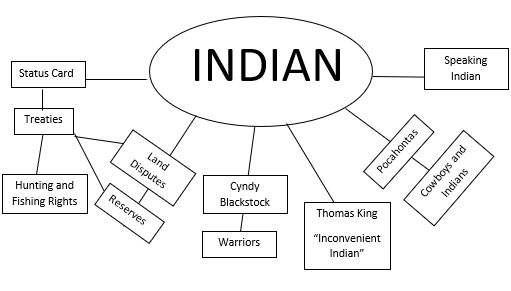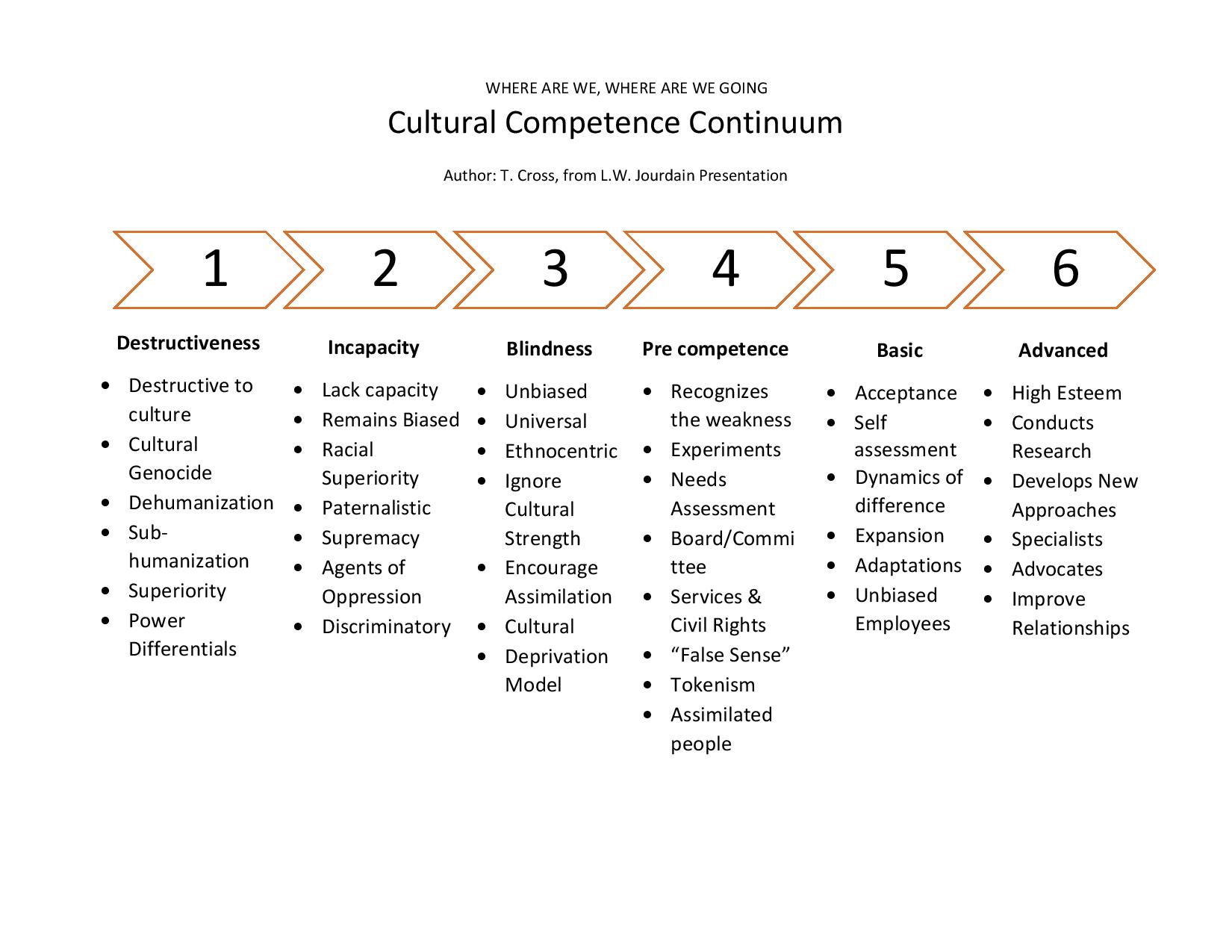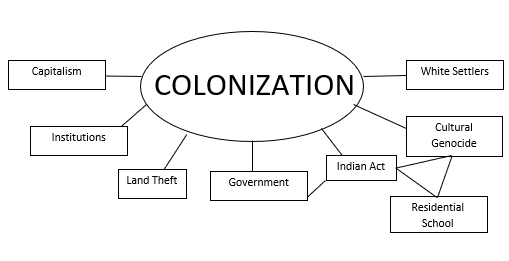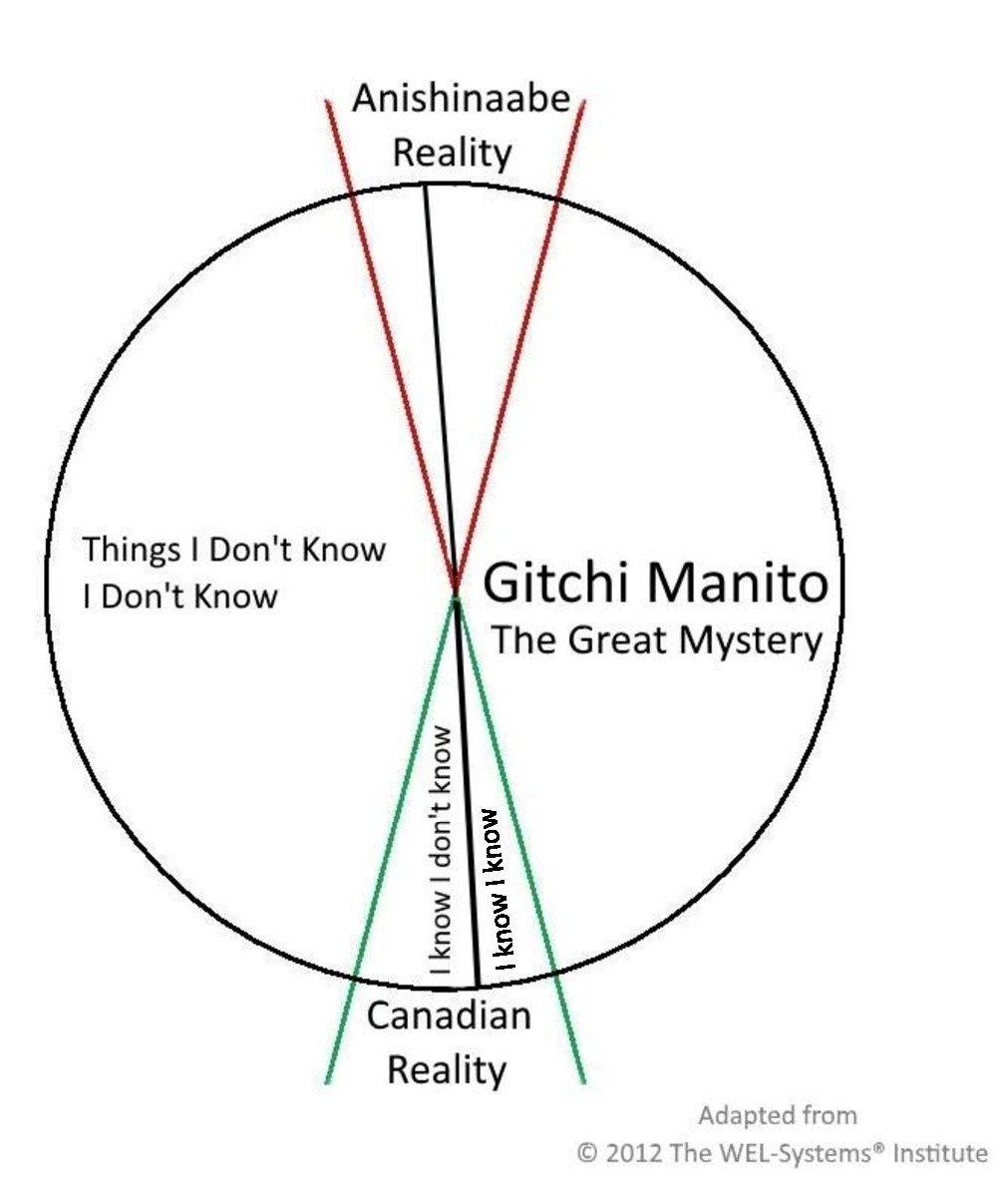3
Learning Objectives
The main themes throughout training is for participants to explore their own worldview (perception), relationships (power & privilege) and how we give back to community (purpose). These qualities are fundamental and critical to working with indigenous communities.
- Exploring appropriate terminology and definitions;
- Introduction to the comparison between realities in Canada;
- Becoming open to new worldviews and valuing the differences;
- Identifying personal privilege.
- Identifying personal purpose within Nogdawindamin.
Cultural Safety & Culturally Unsafe
- Cultural Safety: training framework that speaks to sensitivity, diversity, oppression, racism, power relations, privilege, status, and status of those who service. It explores the bicultural relationship between the “colonizer & colonized”. It is inclusive to spirit, blood memory, respect, interconnectedness, storytelling, feelings, experiences and guidance. [1]
- Culturally Unsafe: practices as “any actions which diminish, demean, or disempower the culturally identity and well being of an individual.”[2]
Responsibility and Appropriation
Facilitator Tip:
Share the message that this is an opportunity to “value the differences” in known knowledge. Encourage people to learn their own heritage. When a person’s cup is full of their own, there is no need to replace it with something else.
- The sole purpose of this training is to give an experience of Anishinaabe traditional knowledge, to assist Nogdawindamin employees to have a crucial understanding of its importance to Anishinaabe identity and healing.
- EXAMPLE It is not intended to “ordain” anyone to conduct Anishinaabe spiritual practices. An example, In 2009, a non-indigenous James Arthur Ray, a self-help guru charged 50 people up to $10,000 to attend his 5 day “Spiritual Warrior” retreat in Sedona, Arizona. Where an “authentic” sweat lodge was the highlight of the week, after a 36 hour fast in the desert. This experience intention was to push people to their limits, (plastic tarps were used). Three people died and 18 were hospitalized.
Introduction to Anishinaabe Worldview
Nogdawindamin is an Indigenous Child Welfare agency. A good place to start is some terminology.
“Indian” Word Web Exercise
Facilitator Tip:
Have some personal examples of power & privilege ready to share.
This exercise will give you an idea with where the group’s world view and personal “social location” is. Create a space for everyone to share, specifically around stereotypes and microaggressions.
Brief attention can be made to the Values & Ethics Chart, explain that we will explore this further as we move forward.
“Indian” Word web – Exercise
Borrowed from “The Story that Was Never Told” – Jim Dumont and Bob Antone
The intent and purpose of this training is to assist with decolonizing your mind and help to retrain your perception when working with Anishinaabe people.
Note: Definitions given are from the dictionary, elaborate or even share stories to help define from your perspective.
- On a poster paper, write the word “INDIAN” in big letters and draw a circle around it.
- Ask participants what they think of when they hear this word.
- Write the participant answers around the word, linking words that fit together.
- There are no wrong answers, encourage participation that can lead into discussion.
- Discuss with the group about the terminology and definitions.
Example[3]

Terminology to “Indian” Word Web Exercise
Indian: politically incorrect term, may be derogatory to some people.
Indian relating to India or to the subcontinent comprising India, Pakistan, and Bangladesh. Also, relating to or denoting indigenous peoples of North, Central, and South America, especially those of North America = “North American Indian.”[4]
Aboriginal: being the first or earliest known of its kind present in region from the earliest time. Particularly relating to the aborigines in Australia.[5]Native: being the place or environment in which a person was born “one’s native land” or the “natives of Canada”.[6]
Indigenous: Originating in and characteristic of a region or country, being innate and inherent to that land. [7]
First Nations: any of the indigenous peoples or Indian communities of Canada, especially one formally recognized by the Canadian government. [8]
Anishinaabe: in Anishinaabemowin this translates to humans. The Anishinaabe people refer themselves as this to Identify what Nation they are.
Anishnawbek: is refers to Anishinaabe peoples Nation, Sagamok Anishnawbek.
Stereotypes: In social psychology, a stereotype is an over-generalized belief about a particular category of people. It is an expectation that people might have about every person of a particular group. The type of expectation can vary; it can be, for example, an expectation about the group’s personality, preferences, or ability.[9]
Tokenism: is the practice of making only a perfunctory or symbolic effort to be inclusive to members of minority groups, especially by recruiting a small number of people from underrepresented groups in order to give the appearance of racial or sexual equality within a workforce. [10]
Cultural Competence Continuum

Culturally Competent Continuum UCSD e-Learning
“Colonization” Word Web Exercise
Facilitator Tip:
Have some personal examples of power & privilege to share.
This exercise will give you an idea with where the group’s world view and personal “social location” is.
“Colonization” Word web – Exercise
Borrowed from “The Story that Was Never Told” – Jim Dumont and Bob Antone
Note: Definitions given are from the dictionary, elaborate or even share stories to help define from your perspective. Brief attention to the Values and Ethics Chart.
- On a Poster paper, write the word “colonialism” in big letters. Post Beside Indian
- Ask participants what they think of when they hear this word.
- Write the participant answers around the word, linking words that fit together.
- There are no wrong answers, encourage participation that can lead into discussion.
Example:[12]

Terminology to “Colonization” Word Web Exercise
Colonization: Colonization refers to both the formal and informal methods (behaviours, ideologies, institutions, policies and economies) that maintain the subjugation or exploitation of Indigenous Peoples, lands, and resources. Colonizers maintain and/or expand their social, political, and economic power. Colonization has resulted in the loss of major rights such as land and self-determination, but most of our contemporary daily struggles (poverty, family violence, chemical dependency, suicide, and the deterioration of health) are also direct consequences of colonization. [13]
Decolonization: is the intelligent, calculated, and active resistance to the forces of colonialism that perpetuate the subjugation and/or exploitation of our minds, bodies, and lands, and it is engaged for the ultimate purpose of overturning the colonial structure and realizing Indigenous liberation.[14]
Assimilation: to make someone or something become part of a group, country, society.
Genocide: defined by the 1948 United Nations, intent to destroy, in whole or in part, a national, ethnical, racial or religious group, as such:
- Killing members of the group;
- Causing seriously bodily or mental harm to members of the group;
- Deliberately inflicting on the group conditions of life calculated to bring about its physical destruction in whole or in part;
- Imposing measures intended to prevent births within the group;
- Forcibly transferring children of the group to another group. [15]
Intent to commit genocide could be inferred both from direct government actions, but also from it’s inaction when faced with the foreseeable implications of its policies. [16]
Microaggressions: is a term used for brief and commonplace daily verbal, behavioural, or environmental indignities, whether intentional or unintentional, that communicate hostile, derogatory, or negative prejudicial slights and insults toward any group, particularly culturally marginalized groups. [17]
The 4P’s
The main themes throughout this training and for frontline social work are:
- Perception
- Privilege & Power
- Purpose
It is critical for consistent reflection of personal worldviews, behaviours, body language, roles and responsibilities in the community.
Perception
Perception is the belief or opinion from a person’s practiced culture and experience that forms that person’s worldview. What you gather from your 5 senses, and then make sense out of it. In the Strawberry Outline, it is a symbol of our worldview.
Perception, a Structure of Reality Exercise
Perception, a Structure of Reality Exercise
Draw this out on a big poster paper, 1 step at a time while guiding participants to do the same in their workbooks.
- Have participants focus on the circle in their workbooks.

Structure of Reality - This represents galactic universal knowledge
- Find the middle of your circle, and then make a little pie slice.
- Now cut that slice into 2 pieces, making one piece a little bigger.
- The smaller slice represents things You Know, You Know
- I know the sky is blue the grass is green
- I know 2 + 2 = 4 (education system)
- I know there are people that can perform surgery
- The smaller slice represents things You Know, You Know
-
- The larger slice represent things You know, You Don’t Know
- I know I don’t know why the sky is blue
- I know I don’t where numbers came from
- I know I don’t know how to preform brain surgery
- The Bigger part of the circle that is untouched represents the things I Don’t Know, I Don’t Know.
- The larger slice represent things You know, You Don’t Know
4. Make another pie slice directly across from the first. Divide that by 2, same as before.
-
- This represents the Anishnawbek Reality. It could be the same for another nationality like Italian, African, or Scottish etc. We all have different worldviews, different realities about the world that we live in simultaneously.
5. The larger part of the circle, the I Don’t Know, I Don’t Know is Gichi Manito, the Great Mystery and the inter connectedness and the interrelationships with all creation.
-
- Indigenous people hold this understanding and this BELIEF SYSTEM is the foundation of their respective Culture. As discussed above, there are many different nationalities of Indigenous peoples, each with their own culture, governance, languages. We will learn more about this throughout this training.
Valuing the differences, there is more then one way to reach to the same place. We encourage that participants ask themselves “how can I be enriched by these teachings?”
We invite participants to have an open mind and look at “life” through another lens aka perception of our purpose to be here. Specifically, within the Lodge of Nogdawindamin.
Power and Privilege
Power and privilege on the Strawberry outline represents our relationships with ourselves, one another and our environment.
This is defined by:
- An advantage that only one person or group of people has [18].
- Something nice that you feel lucky to have [19].
- A right, immunity, or benefit enjoyed only by a person beyond the advantages of most: the privileges of the very rich.[20]
- Things that are taken for granted on a daily basis that a person can be unconscious to the benefits and it turns to an expectation.
Our Power & Privilege Self Reflection
Our Power & Privilege Self Reflection
Facilitator Tip:
Have some personal examples of power & privilege and how it relates to relationships.
Some examples:
- Having a working flushing toilet;
- Having a working dependable vehicle; or
- Traditional knowledge carried and practiced in family.
Allow time for the following questions to be reflected, open space for people to share if they wish.
- What privileged do you have? Was there a time where you felt privileged, unprivileged, under privileged, or over privileged?
- Who is the dominant majority in Canada? Whose “languages, knowledge’s and voices are being privileged and heard?” Answer: corporations and the state, which are predominately white men. [21]
- How do you as a Canadian citizen benefit from colonialism?
- In the Canadian Culture, we are bombarded with messages via: technology, judgements, stereotypes, colonialism and fear. How does “Canada” benefit from this?
Purpose
Purpose in the Strawberry outline represents being reciprocal and the act of “giving back.”
- The reason for which something exists or is done, made, used, etc.[22]
- An intended or desired result; end; aim; goal. [23]
- Determination; resoluteness. [24]
- The aim that someone wants to achieve, or that something is intended to achieve [25]
Our Purpose Self Reflection
Our Purpose Self Reflection
Facilitator Tip:
Ask participants if someone would like to share, what they feel their purpose is. Some Examples:
- being a parent
- working with people, children or youth
- What is your purpose?
- What is your purpose at Nogdawindamin?
- What is your purpose as a helper?
Difference in Perspectives
Cyndy Baskin[26], shares:
We may be different, but there are things that we all have in common.
- Everyone has a common humanity.
- There are many ways of knowing and all are significant.
- Helping inherently carries humanistic goals.
- Context needs to always be kept in mind.
- Connecting with service users (clients) and ensuring that our practices are meaningful to them.
- Self-fulfillment can only be truly realized when there is group/community fulfillment.
The 4R’s
Suzanne Methot listed the 4R’s in her book Legacy[27], a biographical journey of self discovery. Methot 4R’s:
- Respect
- Responsibility
- Reciprocity
- Relationship
Corresponds and is worth being mentioned to the continuing theme throughout the training and frontline work, and how to move forward with the 4P’s; Perception, Power & Privilege and Purpose.
Respect: being one of the 7 virtues, means that no one is better then another living being (animate and inanimate) and is treated with honour. Respecting and giving value to Indigenous Knowledge, understanding and following individual community protocols. This includes behaving in a non-judgemental way to build trust.
Responsibility: the opportunity or ability to be accountable and/or behave in an appropriate manner to ensure that choices are made in a “good way” that does not undermine or disrespects or in anyway viewed in culturally unsafe practices.
- Personal Responsibility, doing work with a good mind means working on personal trauma.
- As a Group,
Reciprocity: a relationship of give and receive, “everything I do will effect you and everything you do will effect me.” All knowledge and experiences that individual people bring are honoured and viewed as gifts as lessons.
Relationship: the connection that is made between 2 or more people, that is based on respect, responsibility and reciprocity. This is to be a focus as the role of a Nogdawindamin Helper.
Summary
- 4Ps (Perception, Power & Privilege, and Purpose) when working with Indigenous peoples.
- 4Rs (Respect, Responsibility, Reciprocity, Relationship)
- Advocate connection to break cycles through a family wellbeing lens.
Key Takeaways
- Cultural appropriation is complex issue and knowing when, where and how to use cultural knowledge in a respectful way.
- Introduction to decolonization and Indigenous worldviews.
- Be mindful of the 4P’s you carry into any given situation.
Media Attributions
- Indian Word Web Example
- Cultural Competence Continuum-page-001
- Colonization Word Web Example
- Perception – Structure of Reality
- Baskin, C. (2016) Strong Helpers’ Teachings: The Value of Indigenous Knowledges in the Helping Professions 2ed. Toronto: Canadian Scholars Press Inc. ↵
- Baskin, C. (2016) Strong Helpers’ Teachings: The Value of Indigenous Knowledges in the Helping Professions 2ed. Toronto: Canadian Scholars Press Inc. ↵
- "The Story That Was Never Told" Jim Dumont and Bob Antone ↵
- www.oxfordlearnersdictionaries.com ↵
- Merriam-Webster dictionary ↵
- Dictionary.com ↵
- Dictionary.com ↵
- Dictionary.com ↵
- Wikipedia ↵
- Wikipedia ↵
- null ↵
- "The Story That Was Never Told" Jim Dumont and Bob Antone ↵
- Waziyatawin and M. Yellow Bird, 2005. (Wilson, 2005) ↵
- Wilson, W. A. (2005). For Indigenous Eyes Only: A Decolonization Handbook. Sante Fe, New Mexico: School of American Research Press. ↵
- (Brokenleg) ↵
- (Australia's Bring Them Home Report, 1997) ↵
- Wikipedia ↵
- (Cambridge Dictionary) ↵
- (Macmillan Dictionary) ↵
- ( Dicitonary.com) ↵
- Cyndy Baskin (2016), pg 79 ↵
- (Dictionary.com) ↵
- (Dictionary.com) ↵
- (Dictionary.com) ↵
- (MacMillan Dictionary). ↵
- Cyndy Baskin (2016) p107 Strong Helper’s Teachings: The Value of Indigenous Knowledge’s in the Helping Professions ↵
- Methot, S. (2019). Legacy. Toronto: ECW Press. ↵